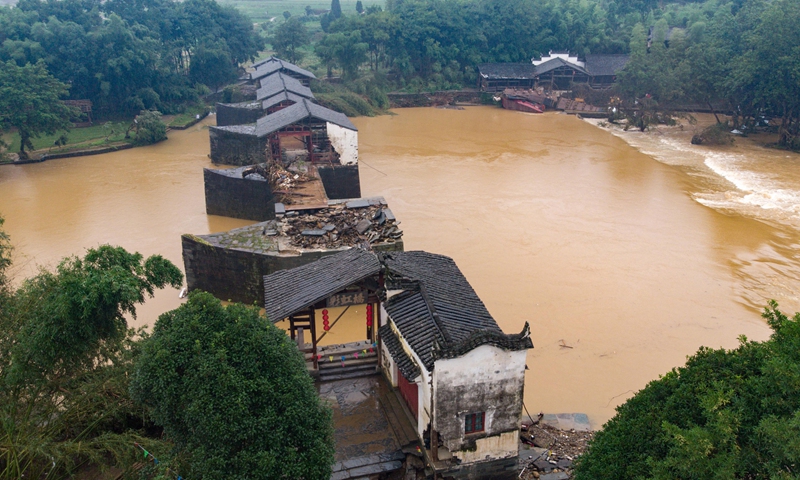Chinese relics authorities have called for urgent efforts to protect ancient cultural relics, some dated back to the Ming Dynasty (1368-1644), which were swallowed up by heavy rainfall that has lashed southern China since June.
China’s National Cultural Heritage Administration issued an emergency notice on Friday requiring local authorities to devise plans to make up for loopholes exposed regarding protection of cultural relics against floods.
Cultural relics institutions and museums should formulate plans for responding to major floods and geological disasters in response to risks such as the destruction of ancient bridges, the collapse of ancient city walls, ancient buildings, and ancient trees, the administration said.
“For ancient cultural relics, it is an inevitable process of them being destroyed either deliberately by human activities or caused by natural disasters such as floods or earthquakes. Once damaged, many cultural relics that recorded valuable historic memories of cities and people’s lives would be very difficult to restore back to their original form,” Tian Lin, a professor of ancient architecture at the Beijing University of Civil Engineering and Architecture, told the Global Times on Saturday.
To prevent them from being destroyed, local governments should take decisive and timely measures to protect damaged relics, Tian said. He suggested that for ancient bridges with unstable stone or wood structures, local authorities may consider enhancing their flood-discharge capability, thus mitigating the risk of a head-on deluge brought about by floods, Tian said.
Since June, torrential rains have increased in southern China. Flooding and geological disasters are posing huge threats toward local cultural relics. According to statistics from the administration, more than 130 immovable cultural relics in 11 southern provinces were damaged due to floods as of July 7.
Among many destroyed cultural relics, the Zhenhai Bridge, a state-level cultural relics protection site located in Huangshan, East China’s Anhui Province that was damaged by floodwaters on Tuesday dates back over 480 years to the Ming Dynasty (1368-1644).
Authorities in Anhui Province said Friday that it will repair the ancient bridge based on relics restoration regulations.
The Lecheng Bridge in Sanxi county of Anhui was also destroyed by the floods last week, with only two pieces of the bridge’s body left. The bridge was firstly built in the Ming Dynasty and later rebuilt in the Qing Dynasty (1644-1911) after it was destroyed by floods.
Other regions including Hunan, Guangdong, Zhejiang and Sichuan had also seen ancient relics damaged by floods, mostly ancient bridges and buildings. Experts and authorities from affected regions are racing against time to make up for potential loopholes and laying out restoration plans, cultural heritage authorities said.
Floods destroy part of the Song-dynasty bridge, Caihong Bridge, in Shangrao city, East China’s Jiangxi Province on Thursday. Photo: VCG




